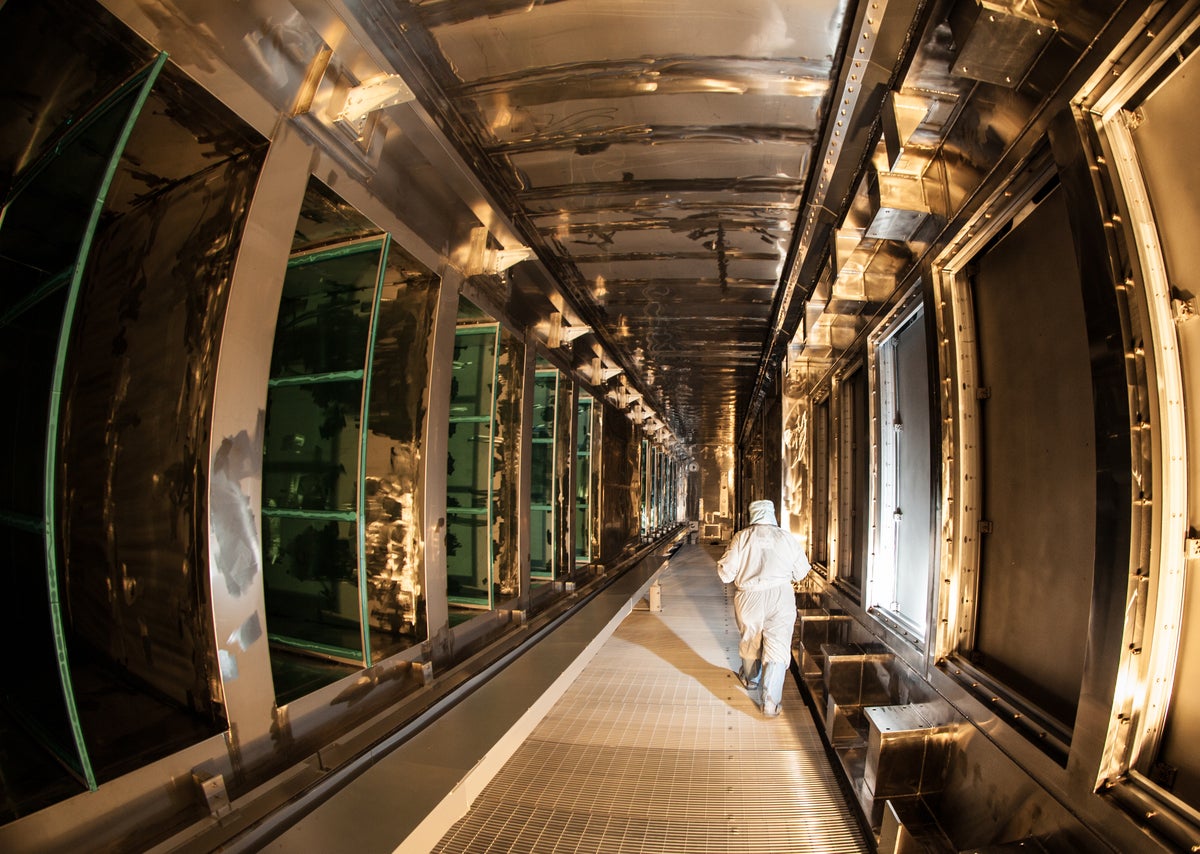
US scientists have reportedly carried out the first nuclear fusion experiment to achieve a net energy gain, a major breakthrough in a field that has been pursuing such a result since the 1950s, and a potential milestone in the search for a climate-friendly, renewable energy source to replace fossil fuels.
The experiment took place in recent weeks at the government-funded Lawrence Livermore National Laboratory in California, where researchers used a process known as inertial confinement fusion, the Financial Times reports, citing three people with knowledge of the experiment’s preliminary results.
The test involved bombarding a pellet of hydrogen plasma with the world’s largest laser to trigger a nuclear fusion reaction, the same process which takes place in the sun.
Researchers were able to produce 2.5 megajoules of energy, 120 per cent of the 2.1 megajoules used to power the experiment.
The laboratory confirmed to the FT it had recently conducted a “successful” experiment at the National Ignition Facility, but declined to comment further, citing the preliminary nature of the data.
“Initial diagnostic data suggests another successful experiment at the National Ignition Facility. However, the exact yield is still being determined and we can’t confirm that it is over the threshold at this time,” it said. “That analysis is in process, so publishing the information . . . before that process is complete would be inaccurate.”
The scientific community is abuzz that a net gain fusion reaction has taken place, noting that US energy secretary Jennifer Granholm and US under-secretary for nuclear security Jill Hruby are set to make an announcement from the national laboratory on Tuesday.
Many commentators celebrated the reported fusion breakthrough.
“Scientists have struggled to show that fusion can release more energy out than is put in since the 1950s, and the researchers at Lawrence Livermore seem to have finally and absolutely smashed this decades-old goal,” Arthur Turrell, deputy director of the UK Office for National Statistics, wrote on Twitter on Sunday. “This experimental result will electrify efforts to eventually power the planet with nuclear fusion—at a time when we’ve never needed a plentiful source of carbon-free energy more!”
Oliver Cameron, an executive at self-driving car company Cruise, predicted that with the news out of Livermore, the world could be in for a futuristic era of widespread nuclear fusion energy and broadly capable artificial general intelligence (AGI).
“It is becoming increasingly likely that we end this decade with both AGI and viable nuclear fusion,” he wrote on Twitter on Sunday.
In April, the White House announced a suite of initiatives meant to support the development of the fusion industry.
“Fusion is one of a much larger suite of clean energy gamechangers that [are] commensurate with the scale that the climate challenge requires,” Alondra Nelson, head of the White House Office of Science and Technology Policy, said at the time in a statement. “Now is the time for courageous innovation to accelerate fusion energy.”
The Biden administration also helped secure $370bn in subsidies for low-carbon energy development as part of the 2022 Inflation Reduction Act.
Researchers and environmentalists remain divided over the green potential of nuclear fusion.
Proponents argue that fusion is much safer than nuclear fission, the process that powers all existing nuclear energy plants. They say that if commercial reactors were able to regularly achieve net energy gain, and were powered by renewable energy, fusion could be the energy source that finally weans the world off its dependence of fossil fuels.
“For my generation, it was fear of weapons that influenced people’s view of nuclear. In this generation, it’s climate change,” Todd Allen, a professor of nuclear engineering at the University of Michigan and director of the school’s Fastest Path to Zero climate centre, told The Independent earlier this year. “I don’t know in the end if these are the technologies that catch fire or not. It’s just interesting to me because they’re the first demos of new ideas in half a century. I think there is a lot of interest and potential.”
Others, however, argue nuclear fusion has a long history of overpromising and under-delivering, despite massive capital expenditures, a sluggish pace of development the world can’t afford given the dwindling time available to avert the worst of the climate crisis.
“We’ve never been in principle against any technology, but it is very clear, every time you start calculating, that the moment you introduce nuclear, the costs are going up and the speed of change is going down,” Jan Haverkamp, an energy expert at Greenpeace, told The Independent in January. “That’s exactly what we can’t afford now as climate change is becoming ever more real. If you start talking about nuclear at this moment, either you’re following a fad or you’re trying to divert the attention from what really needs to be done.”
Still, despite this debate, billions of dollars are flowing into private nuclear startups, like the Bill Gates-backed TerraPower, as well as government efforts like ITER, a 23,000-tonne, $22bn, 35-nation nuclear experiment under construction in France.







